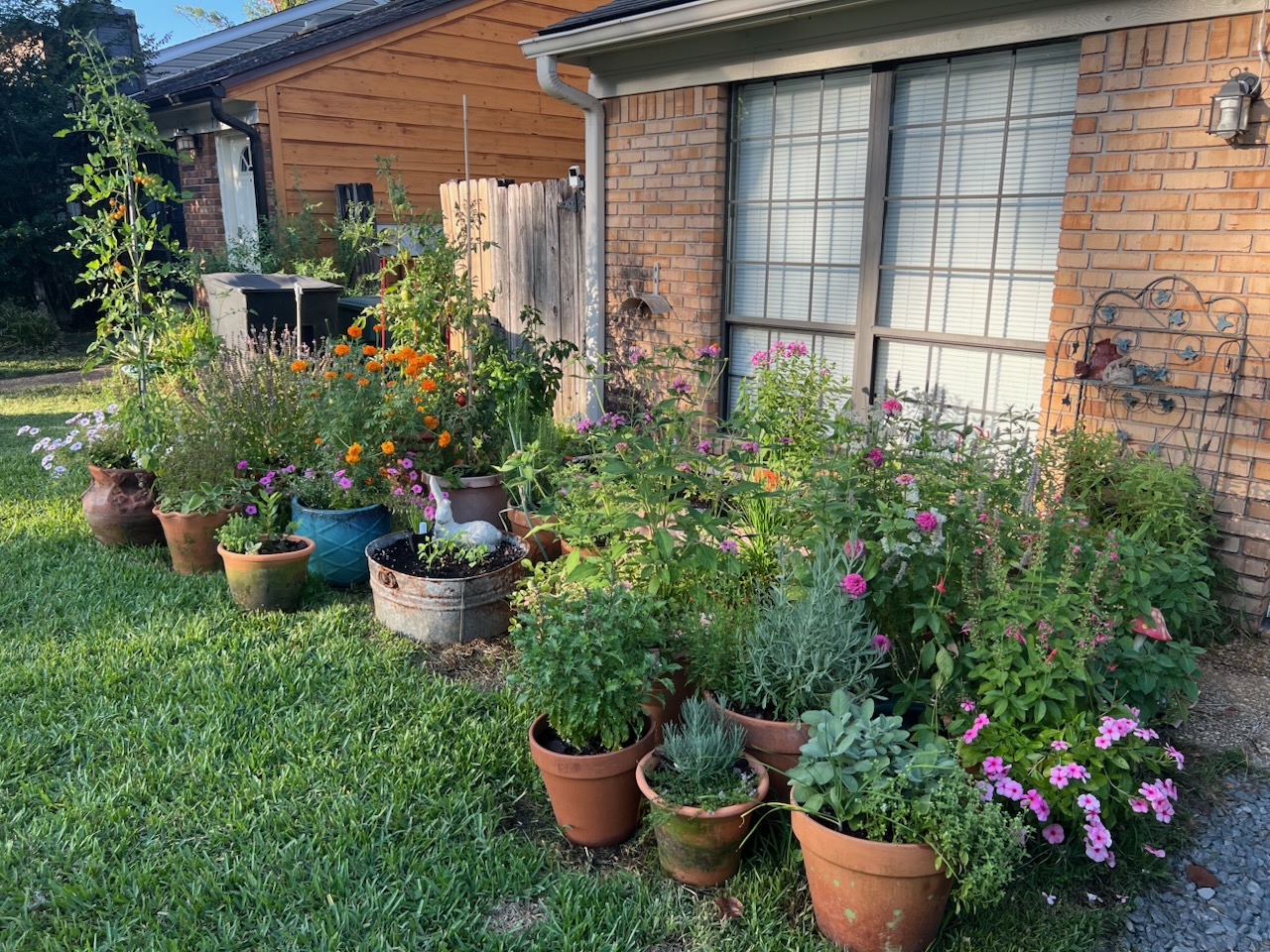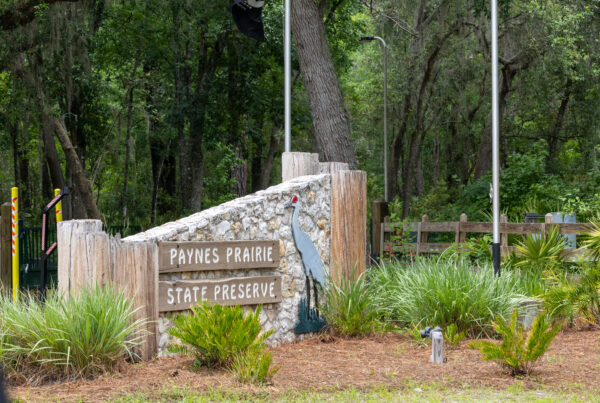You don’t need a big yard to support wildlife—your patio, porch, or even a small walkway can become a thriving habitat! By planting native species in containers, you can attract butterflies, native bees, and even small birds while creating an important stop along a wildlife corridor.

Monarch Butterfly on Blue Porterweed. Photo by Federico Acevedo
Container gardening follows many of the same principles as larger gardens, with a few special considerations. Choosing the right plants is key, and native plant nurseries can help you find species that will thrive in pots. With a little planning, you can turn even the smallest space into a haven for Florida’s pollinators and wildlife!
Designing your container garden
Gardens in a small space on a patio or walkway can combine the same features as larger gardens and yards. Wildlife needs food, water, shelter, and safe spaces to raise young—and container gardens can provide all of these. By planting in layers using a mix of pots and larger containers, you can add wildflowers, ground covers, vines, and even small shrubs or trees. With the right-sized containers, your small garden can make a big impact for Florida’s pollinators and wildlife.
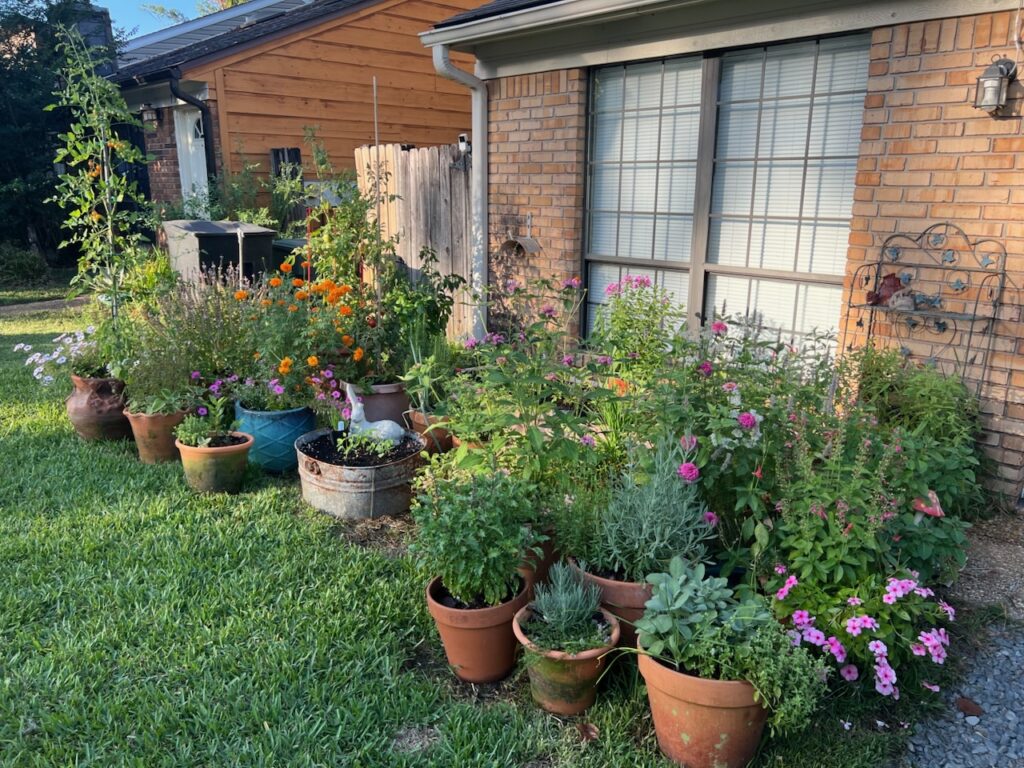
Photo by Carolyn Manuel
When planting in containers, try to group native plants with similar sunlight and moisture needs to help them thrive. Choose a mix of species that bloom in different seasons to provide pollinators with food year-round. Don’t forget to include host plants—wildflowers and herbs offer essential food for native caterpillars, supporting the next generation of butterflies.
Tips for growing native plants in containers
Here are a few key tips to keep your plants, and the wildlife they support, healthy and happy:
Sunlight Needs
Native plants that love full sun in the ground may need a little extra care in containers. The soil in pots heats up quickly, so some sun-loving species benefit from filtered light during the hottest part of the day. If your space is extra sunny, a small tree or taller plant can provide much-needed shade.
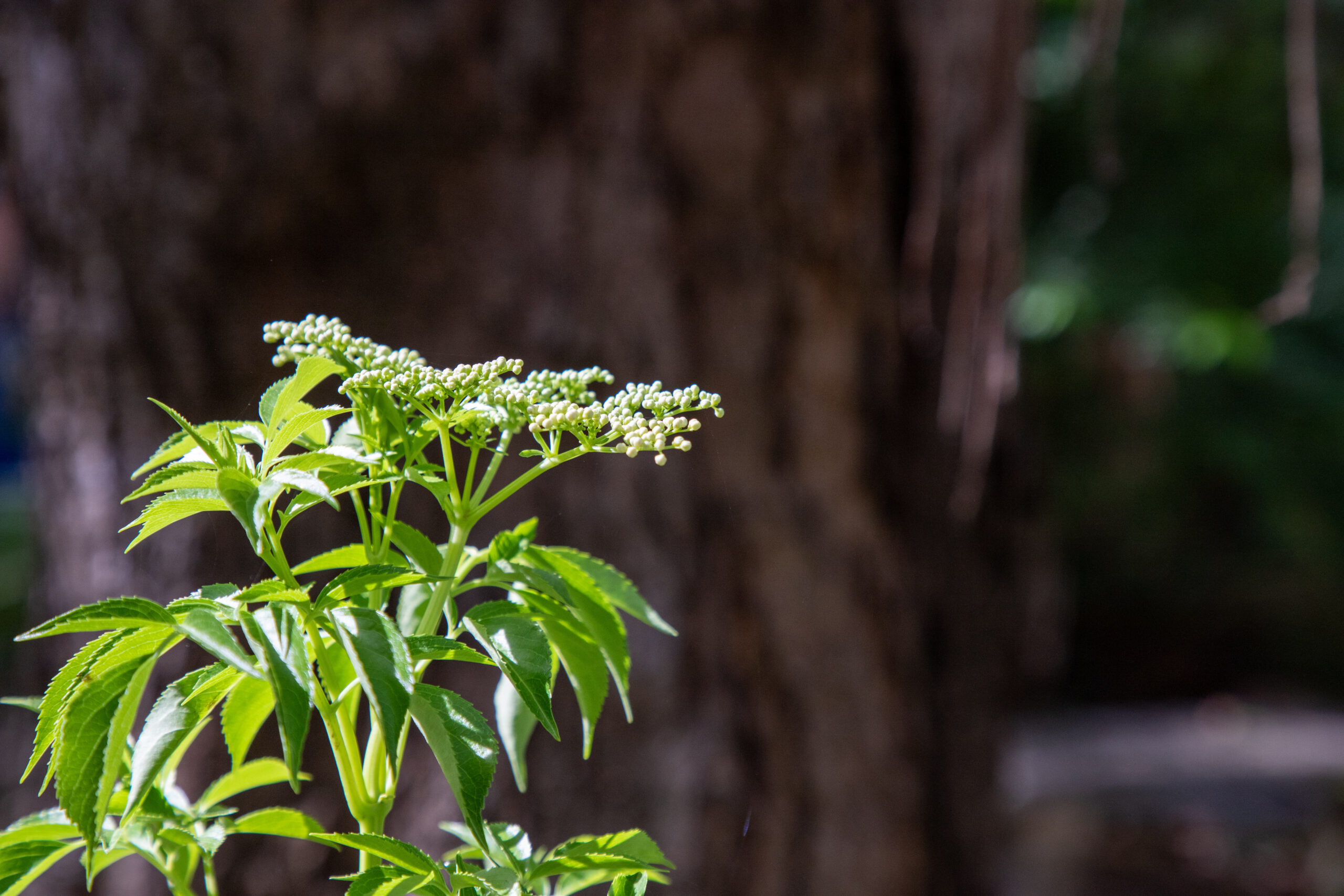
Watering Requirements
Container soil dries out faster than garden soil, even for drought-tolerant natives. Check your pots regularly and water when the soil is dry but not completely parched. A layer of natural mulch, like pine straw, leaves, or Spanish moss, helps retain moisture and keeps roots cool.
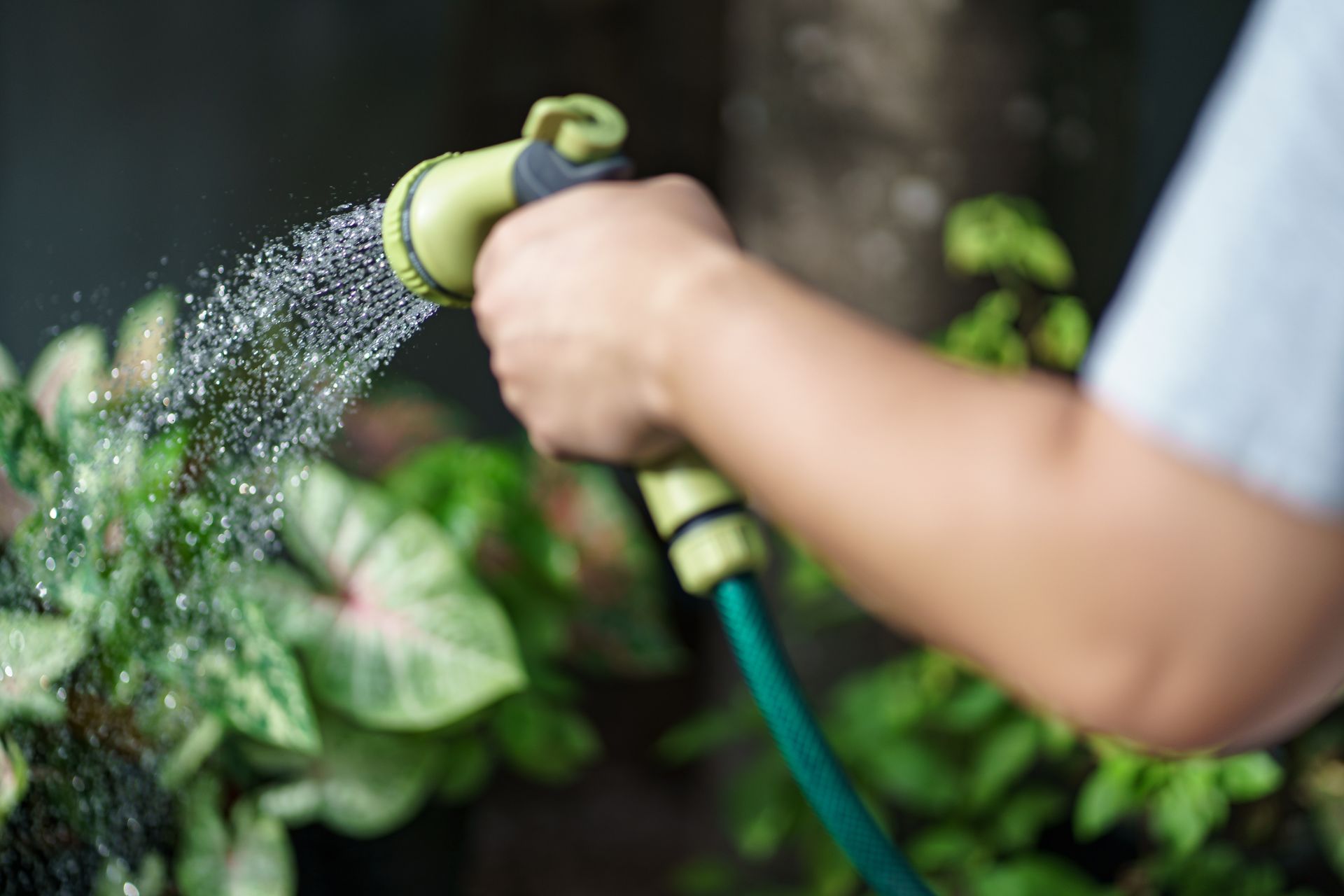
Soil and Fertilizer
Use a high-quality, well-draining potting mix without added fertilizers or pesticides. Native plants typically don’t need fertilizer in the ground, but in containers, nutrients can leach out over time. Shrubs and small trees may benefit from a light application of compost or a slow-release organic fertilizer in the spring.
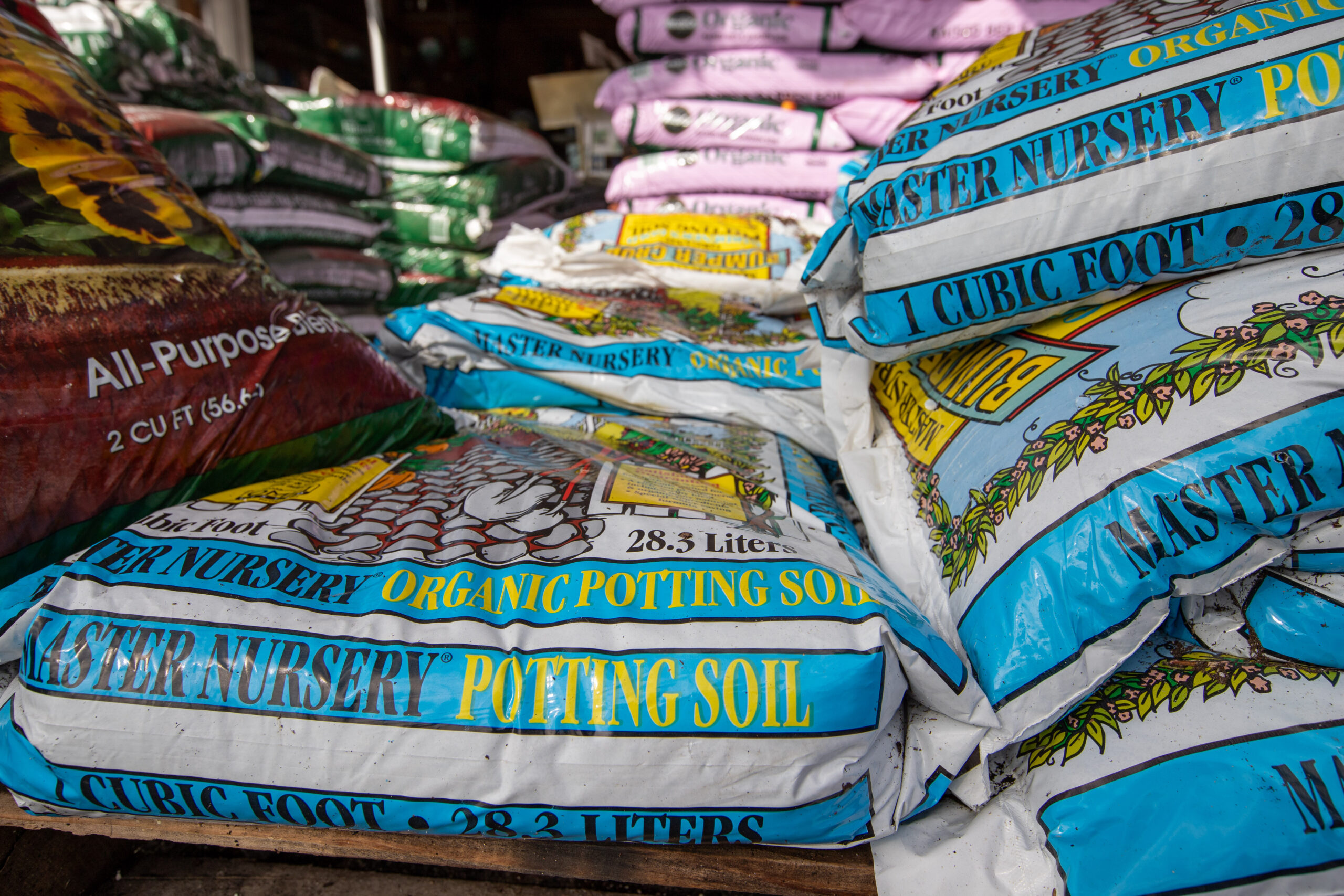
Choosing the Right Container
The type of container you use can make a big difference! Large pots allow roots to spread and give shrubs and trees space to grow. For plants that prefer drier conditions, terra cotta pots with good drainage work well. Moisture-loving plants thrive in glazed ceramic pots with smaller drainage holes. While plastic pots are budget-friendly, they heat up quickly in summer and can freeze in winter, so keep an eye on them.

Native Plant Picks for Patio & Porch Gardens
Looking to create a wildlife-friendly garden in your own small space? A variety of Florida natives can flourish in containers, but you should select those best suited to your region and the sunlight and moisture conditions of your unique garden spot. Here are a few natives around the state that attract pollinators and provide beauty year-round in Florida containers:
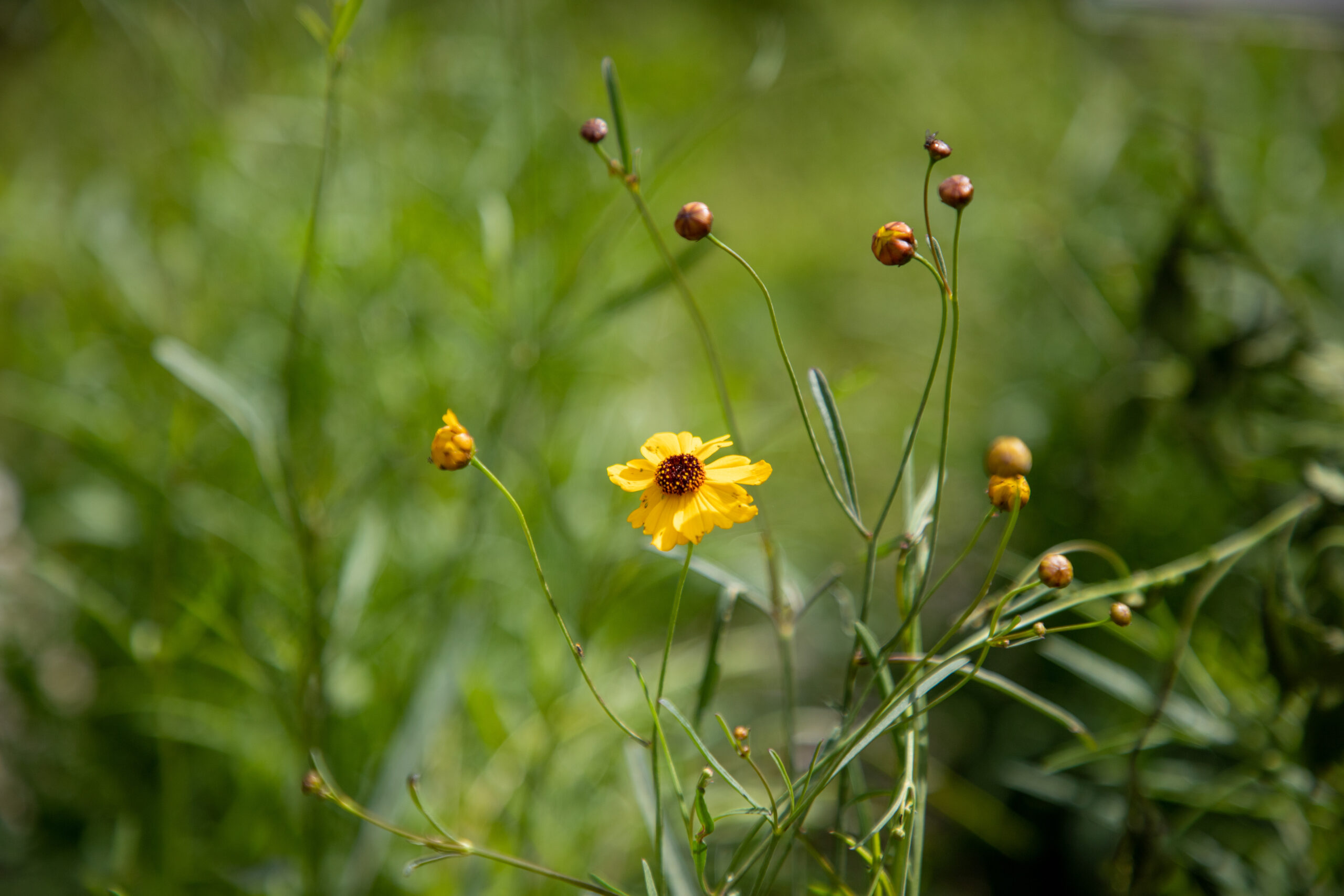
Tickseed. Photo by Federico Acevedo

Blue Porterweed. Photo by Federico Acevedo
Wildflowers:
- Tropical Sage (Salvia coccinea)
- Tickseed (Coreopsis floridana, coreopsis leavenworthii)
- Black-eyed Susan (Rudbecia hirta)
- Blue Porterweed (Stachytarpheta jamaicensis )
- Goldenrod (Solidago leavenworthii
- Solidago sempervirens)
- Swamp Milkweed* (Asclepius incarnata)
- Blazing star (Liatris spicata)
- Stoke’s Aster (Stokesia laevis)
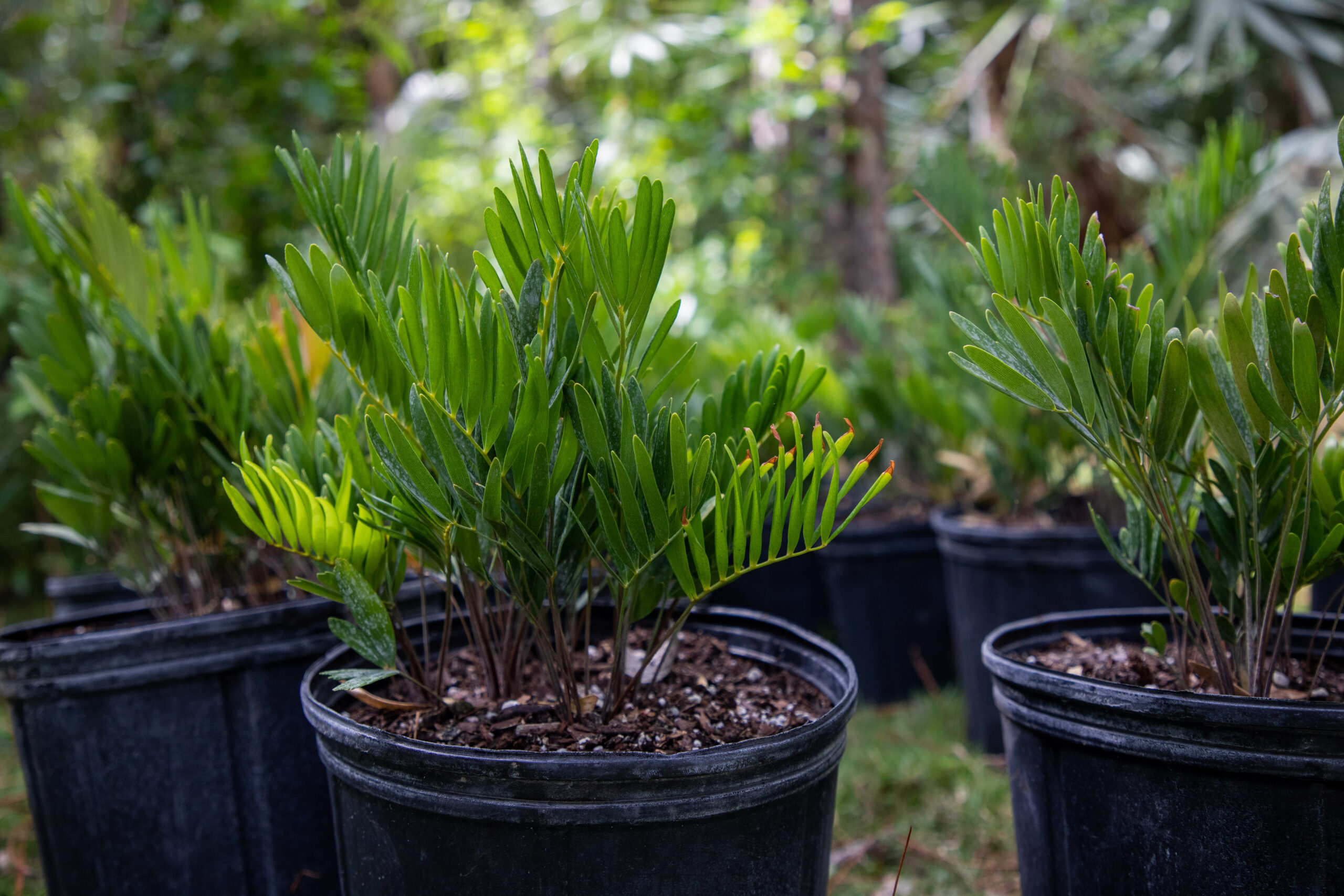
Coontie. Photo by Federico Acevedo
Smaller shrubs/grasses:
- Coontie (Zamia integrifolia)
- Muhly Grass (Muhlenbergia capillaris)
- Bahama Senna (Cassia chapmanii)
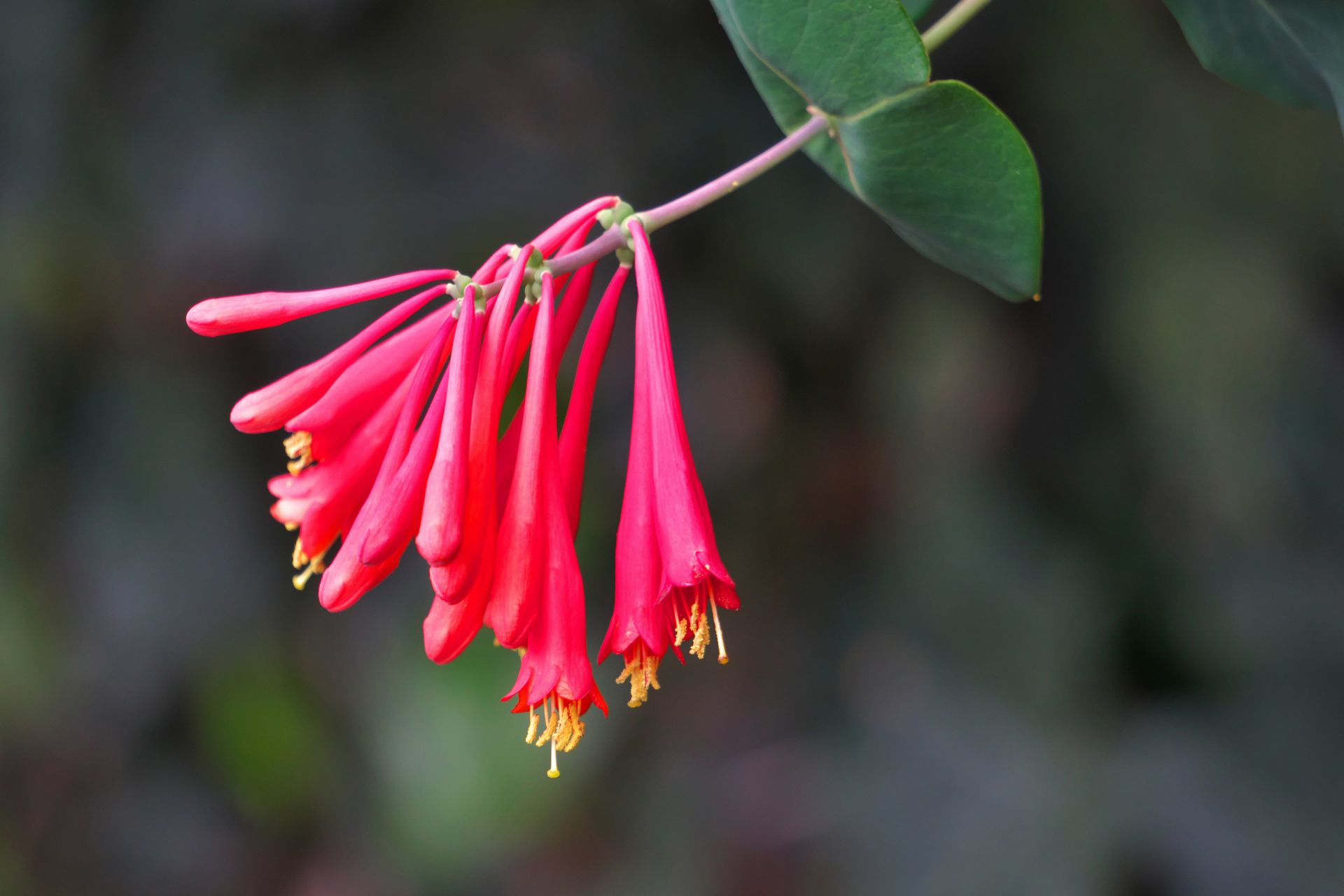
Coral Honeysuckle. Photo by Getty Images
Vines, with trellis or other support:
- Coral Honeysuckle (Lonicera sempervirens)
- Corkystem Passionflower (Passiflora suberosa)
Ground Cover:
- Frogfruit (Phyla nodiflora)
- Wire Grass, Blue-eyed grass (Sisyrinchium angustifolium)
- Twin flower (Dyschoriste oblongifolia)
Once you establish wildlife food, water, and shelter within your garden, consider certifying your wildlife habitat through the National Wildlife Federation. With the right setup, your container garden can provide vital habitat for pollinators, birds, and other wildlife—no big yard required!


